Zilliqa (ZIL) Review: A Next-Generation High Throughput Blockchain Platform
Zilliqa’s goal is to address the challenge of scalability within the public blockchain system by increasing the number of processable transactions per second (TPS). It aims to do this while at the same time offering a lower cost to miners with more stable rewards and a competitively lower transaction fee for users.
Update: Zilliqa has now released its Testnet 2.0, with a number of improvements to
its infrastructure.
Article Summary
- The Idea and the Team Behind Zilliqa
- Zilliqa Partnerships
- The ZIL Price History
- Why Zilliqa Technology is a Game-Changer
- The Zilliqa Network
- The Zilliqa Testnet v2.0 Improvements
- How to Purchase ZIL
- How to Store ZIL
- Zilliqa Roadmap and Future Updates
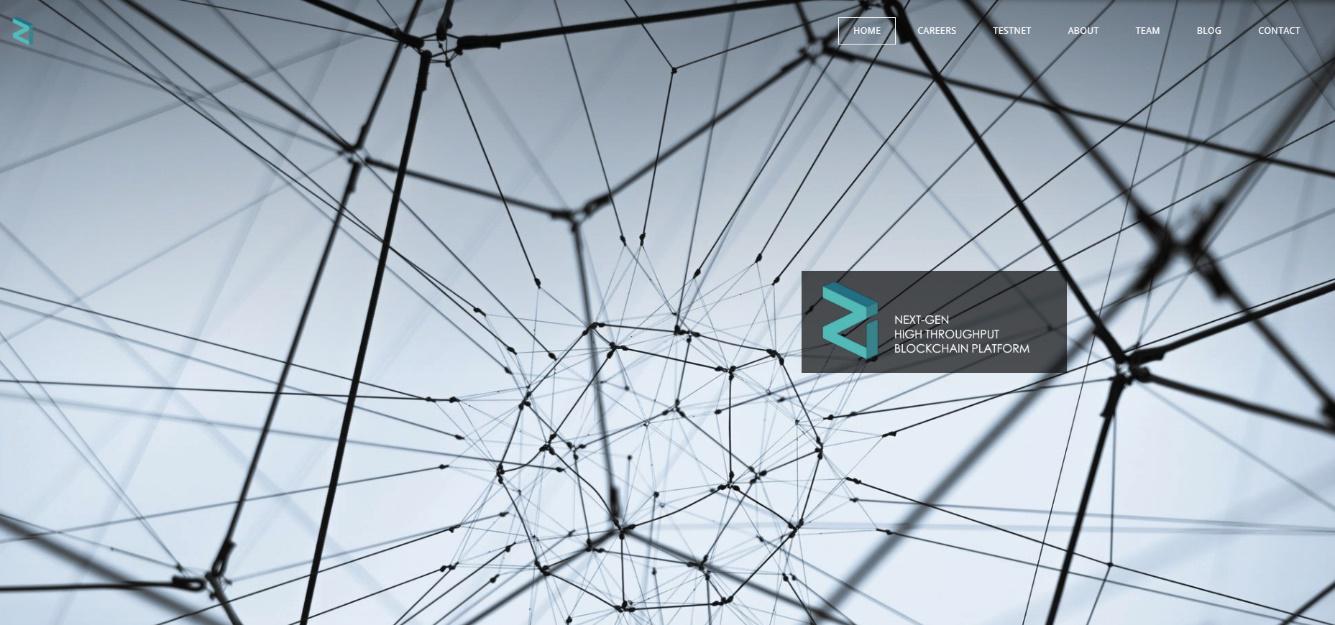
The Idea and the Team Behind Zilliqa
As increasing numbers of cryptocurrencies and smart contract platforms share computing resources, the limits of scalability are becoming more and more challenging. Transaction rates in Bitcoin and Ethereum are usually between 3 and 7 a second (TPS). Any global payments network would require many tens of thousands more TPS in capacity. Zilliqa is a new blockchain platform designed for scalability.
Xinshu Dong, Zilliqa’s CEO, is a computer security expert with experience applying security systems to web applications, web browsers, mobile platforms and cyber-physical systems such as smart grid and transportation systems. He has a doctorate in computer science from the National University of Singapore.
The Head of Business Development is Ong En Hui. She has a strong background in finance and previously worked at JPMorgan in the sales team covering pension funds, insurance companies and banks in Singapore.
The advisory board includes notable figures in the blockchain world, including Loi Luu, co-founder of Kyber Network and Vincent Zhou, Founding Partner of FBG Capital.

Zilliqa Partnerships
Zilliqa has a number of strategic partnerships in the blockchain space through the members of its advisory board, including FBG Capital, a digital asset management firm in the blockchain-based capital market. It also has a partnership with Global Brain, one of the largest venture capital firms in Japan.
Zilliqa announced a partnership with Mindshare, a leading global advertising agency, toward the end of 2017.
It most recently announced a partnership with Genaro, a Turing-complete public blockchain with decentralized storage.

The ZIL Price History
Zilliqa succeed in raising funds through private funding at the end of 2017 for a total of $12 million in Ethereum. This brought the value of Zilliqa to the hard cap of $20 million due to Ethereum’s rising price at the time. Despite its huge success in private funding, Zilliqa had a public sale due to community interest and increased their market cap to $22 million to allow the community to participate in the Token Generation Event.
The token started out $.14 by the end of January and dropped for a few months to around $.05. It is currently again at $.11.
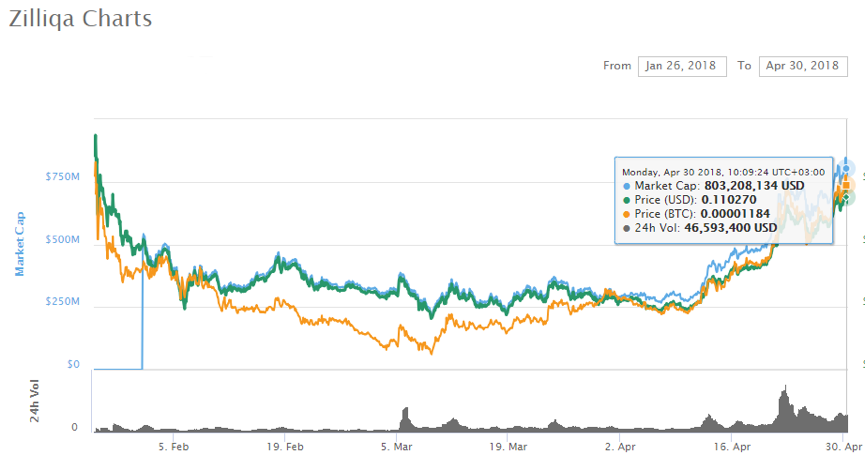
Zilliqa tokens are called Zillings (ZILs) and are used to give users access to the platform which entitles them to transfer funds or run smart contracts. The ZIL token is an ERC-20 token based on the Ethereum blockchain. Once the Zilliqa public mainnet launches, these tokens will be exchanged for Zilliqa-native tokens.
Why Zilliqa Technology is a Game-Changer
Zilliqa’s blockchain is scalable, decentralized and secure. In other words, it seeks the highestest trasnaciton throughput while at the same time allowing more and more nodes on the network. Since every node on a network has to validate each transaction, the data has to travel further and be stored by all nodes on the network. As the size of the network increases, scalability decreases. Zilliqa, on the other hand, is linearly scalable, meaning that as the number of nodes increases, the throughout increases at an almost linear rate.
Another distinguishing unique feature of Zilliqa’s technology is the concept of sharding. Sharding means dividing the mining network into smaller consensus groups called shards which are each capable of processing transactions in parallel, making it possible to process more transactions. These shards all have nodes which verify the transactions, making it decentralized and trustless.
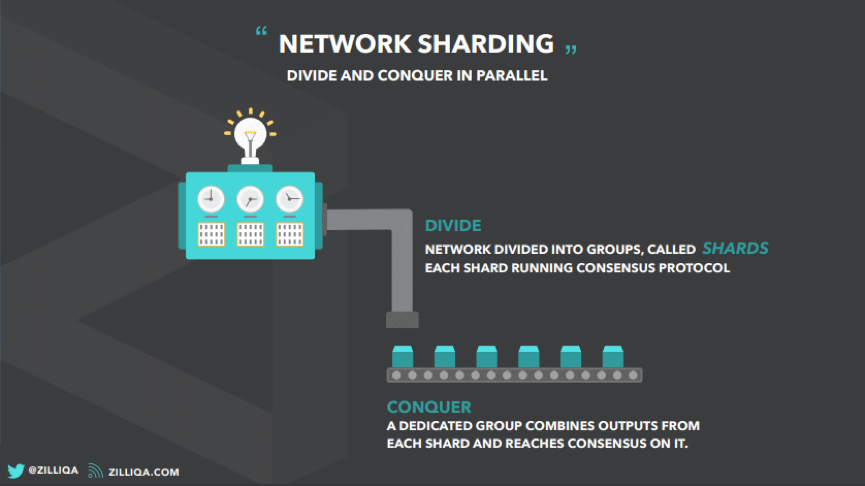
Source: Zilliqa
As a result of their sharding technology, Zilliqa has recorded a throughput 250 times higher than Ethereum. (And that’s before the launch of their mainnet scheduled for Q2 2018).
Another unique feature of Zilliqa’s technology is that in contrast to other blockchains, which apply Proof-of-Work on each block, Zilliqa seeks to be more energy efficient. It does this by using Proof-of-Work to establish mining identities only, rather than as a consensus protocol that requires multiple confirmations. Instead of the traditional consensus protocol, Zilliqa utilizes a Byzantine Fault Tolerant (pBFT) consensus protocol which allows for more efficient management of storage requirements involved in smart contracts by requiring only finality for transactions. That means the entire transaction history does not have to be saved on the blockchain, which translate into more efficient management of storage requirements.
Zilliqa has also developed a new smart contract language called Scilla to address challenges in the traditional smart contract system, including unexpected behavior, and the lack of formal verification. This new smart contract language is designed to run large-scale computations that can work in parallel. These include simple computations such as searching and sorting linear algebra computations as well as more complex computations such as training neural nets, data mining, financial modeling, scientific computing and any MapReduce task.
The Zilliqa Network
Zilliqa’s network is composed of six layers:
- The cryptographic layer – includes elliptic curve cryptography for digital signatures and a memory-hard hash function (Ethash) for Proof-of-Work (PoW). The PoW is used to prevent Sybil attacks and generate node identities.
- Data layer – this layer defines the data that constitutes Zilliqa, such as accounts, addresses, and state, as well as transactions and blocks.
- The network layer – includes transaction sharding (dividing the mining network into small shards that are each capable of processing transactions in parallel)
- The consensus layer – includes a practical byzantine fault tolerance (PBFT) protocol, but with improved efficiency.
- The smart contract layer – includes a special-purpose smart contract language and execution environment that leverages the underlying architecture to provide a large scale and highly efficient computation platform.
- The incentive layer – incentivizes miners who reach consensus with ZIL tokens.
The Zilliqa Testnet v2.0 Improvements
Zilliqa has made a number of testnet major improvements to its infrastructure, including:
- Stability – This include persistent storage using levelDB, as well as the recovery of nodes and a mechanism for replacing malicious nodes. This version also includes optimized storage to increase efficiency and reduce storage capacity as much as possible.
- Mining – Nodes can join the testnet. All nodes are rewarded through their involvement in the consensus protocol. Nodes that are more active receive more tokens. New nodes can now join the network with or without public IP addresses.
- Dev-ops – The main project Zilliqa has been containerized to launch a 20 to 1000-node Kubernetes cluster on their cloud provider. They are currently running an internet large-scale Zilliqa testnet on it. The logging system is now asynchronous, thread-safe, crash-safe and runtime configurable.
- Smart contract support – The system now supports smart contracts. In addition, Zilliqa has launched the first version of their wallet, the Scilla wallet, allowing users to deploy their own smart contracts on their testnet.
Additional features of the new and improved testnet include:
- Documentation to allow users to begin programming applications in Scilla.
- Scilla Blockchain Integrated Development Environments (IDE), which allows users to write smart contracts, upload them to them blockchain, send messages to smart contracts and receive messages from them.
- Scilla Interpreter IDE which allows developers to write their own Scilla programs and upload them to the blockchain.
- An upgraded version of the existing testnet.
- Opening the testnet for new nodes to join.
How to Purchase ZIL
After registering to Binance you can purchase Zilliqa either with a “limit” order, where you manually set the price at which you want to buy Zilliqa, or a “market” buy, where you purchase Zilliqa at the best price available. Another option is a stop-limit, which is an order to buy or sell a coin once the price reaches a specified price.
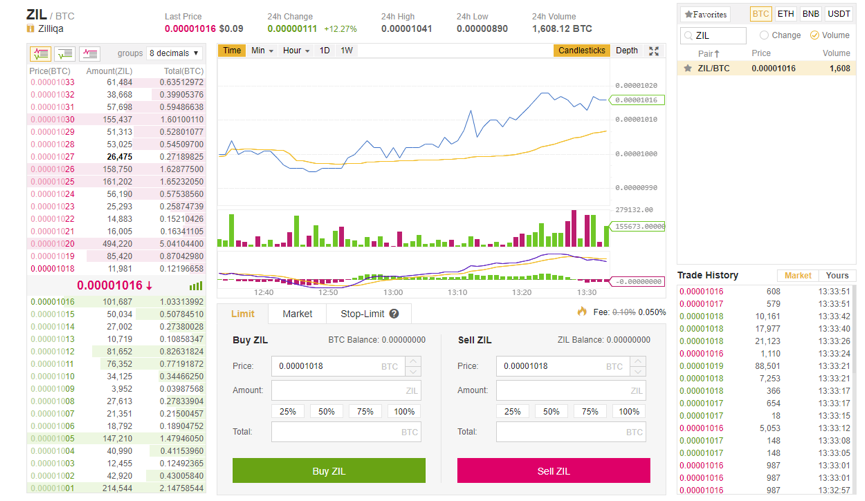
Zilliqa can also be purchased on the following exchanges:
- Huobi (Trade ZIL with USTD on Huobi)
- io (Trade ZIL with USDT on Gate.io)
- OOOBTC (Trade ZIL with BTC on OOOBTC)
- Kucoin (Trade ZIL with BTC on Kucoin)
- Fex (Trade ZIL with USDT on Fex)
How to Store ZIL
You can store Zilliqa in a wallet that has ERC20 support, such as Coinomi, MetaMask or MyEtherWallet, but for maximum security consider hardware wallets such as Ledger Nano S and Trezor.
Zilliqa plans to offer its own open-source digital wallet that runs entirely on your computer. However, it is currently under development.
Zilliqa Roadmap and Future Updates
The company has recently released its public testnet codenamed Red Prawn according to schedule. According to company reports, they have achieved 2,000 to 3,000 transactions per second.
It plans to launch the first version of Zilliqa’s public mainnet in Q3 2018, followed by its dApps release in Q4. It also plans to explore collaborative efforts with other blockchains and communities.
Its mainnet launch is the biggest event in the roadmap to date.
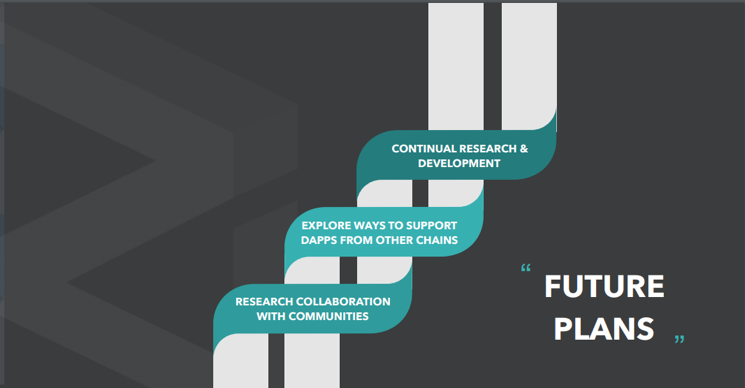
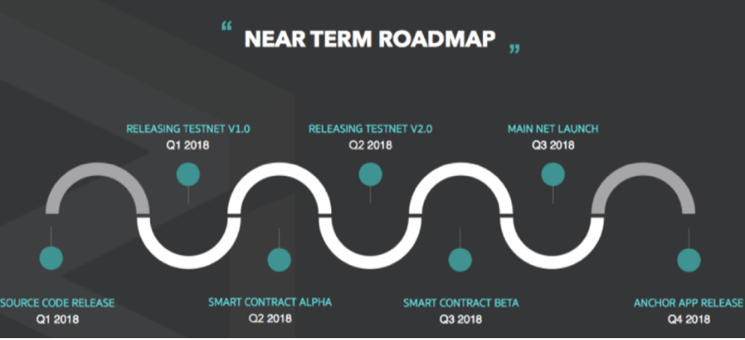
Source: Zilliqa
